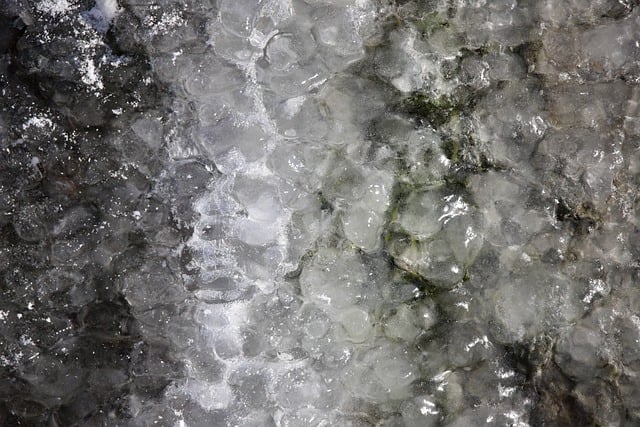Cold water therapy, including ice baths and cold immersion, is a popular and effective method for athletes to enhance recovery, reduce muscle fatigue, and improve performance. The cold temperature diminishes inflammation, soothes pain signals, increases blood flow to sore muscles, and promotes the flushing out of metabolic waste, making it a valuable tool for professional and elite athletes to prepare for future challenges.
Minimizing muscle fatigue is paramount for athletes aiming to peak performance. Among various recovery strategies, cold water therapy, or cold immersion, has emerged as a game-changer. This natural recovery tool involves submerging oneself in cold water post-exercise, offering significant benefits backed by science. From reducing inflammation and pain to enhancing blood flow and muscle repair, cold water therapy is an effective way for athletes to optimize their routines and achieve superior results.
Understanding Muscle Fatigue and Its Impact on Athletes
Muscle fatigue is a common challenge faced by athletes, impacting performance and recovery. It’s a complex physiological response to prolonged physical exertion, where muscles become depleted of energy sources, leading to decreased force production and increased sensory perception of effort. For athletes, especially those engaging in intense training regimens or competing at high levels, managing muscle fatigue is crucial for optimal performance and injury prevention.
Cold water therapy, particularly cold immersion, has emerged as a popular strategy to combat muscle fatigue among athletes. This involves submerging oneself in cold water, typically ice baths or cold pools, after strenuous exercise. The cold temperature helps reduce inflammation, slows down the activity of pain-signaling nerves, and increases blood flow to sore muscles, potentially speeding up recovery. By employing these cold immersion techniques, athletes can experience enhanced muscle recovery, improved performance, and a reduced risk of overexertion injuries.
Introduction to Cold Water Therapy: A Natural Recovery Tool
Cold water therapy, also known as cryotherapy or cold immersion, has emerged as a powerful natural recovery tool for athletes and active individuals looking to minimize muscle fatigue and enhance performance. This ancient practice involves submerging oneself in cold water, usually ice-cold or near-freezing temperatures, for a short period. By doing so, the body undergoes a series of physiological changes that promote rapid recovery and reduced inflammation.
For athletes, incorporating cold water therapy into their routine can be game-changing. The cold temperature constricts blood vessels, reducing blood flow to muscles and minimizing damage caused by intense exercise. This process also helps flush out metabolic waste products that accumulate during physical activity, leading to faster muscle repair and reduced soreness. Many professional sports teams and elite athletes have embraced this method as a safe and effective way to recover from training sessions and competitions, ensuring they’re ready for the next challenge.
The Science Behind Cold Immersion and Its Benefits
Cold immersion, particularly submerging oneself in cold water, has gained popularity among athletes as a powerful recovery tool. The science behind this technique lies in its ability to stimulate various physiological responses. When an athlete immerses themselves in cold water, typically below 59°F (15°C), it triggers a cascade of reactions. Blood vessels near the skin’s surface constrict, reducing blood flow and minimizing inflammation at the muscular level. This process helps alleviate post-workout muscle soreness and accelerates recovery.
Additionally, cold water therapy can enhance the body’s natural anti-inflammatory response, which is crucial for athletes recovering from intense exercise. It also promotes the release of endorphins, often referred to as ‘feel-good’ hormones, contributing to a reduced perception of pain and improved overall well-being. For sports enthusiasts, incorporating cold immersion as part of their post-exercise routine can be an effective way to optimize performance, reduce fatigue, and ensure faster healing for overworked muscles, making it a game-changer in the realm of athlete recovery practices.
Implementing Cold Water Therapy in an Athlete's Routine
Cold water therapy, also known as cryotherapy, has gained significant popularity among athletes looking to enhance their recovery and performance. By immersing oneself in cold water, typically through ice baths or cold showers, athletes can experience a range of physiological benefits. This technique stimulates blood flow, helping to reduce muscle soreness and inflammation, which are common after intense training sessions.
Implementing cold water therapy in an athlete’s routine is straightforward but requires commitment. Many athletes begin with short immersion periods, lasting around 10-15 minutes, and gradually increase the duration as their tolerance improves. It’s essential to ensure proper safety measures, especially when using ice baths, to prevent any risk of hypothermia or injury. Regular practice can lead to improved overall fitness, faster recovery times, and enhanced performance in competitions.
Cold water therapy has emerged as a powerful tool for athletes seeking to minimize muscle fatigue and enhance recovery. By immersing oneself in cold water, athletes can stimulate blood flow, reduce inflammation, and promote faster healing. This natural recovery method, backed by scientific research, offers a game-changing approach to managing post-workout fatigue, allowing athletes to perform at their best with reduced downtime. Incorporating cold water therapy into an athlete’s routine is a simple yet effective strategy to optimize performance and overall well-being.
